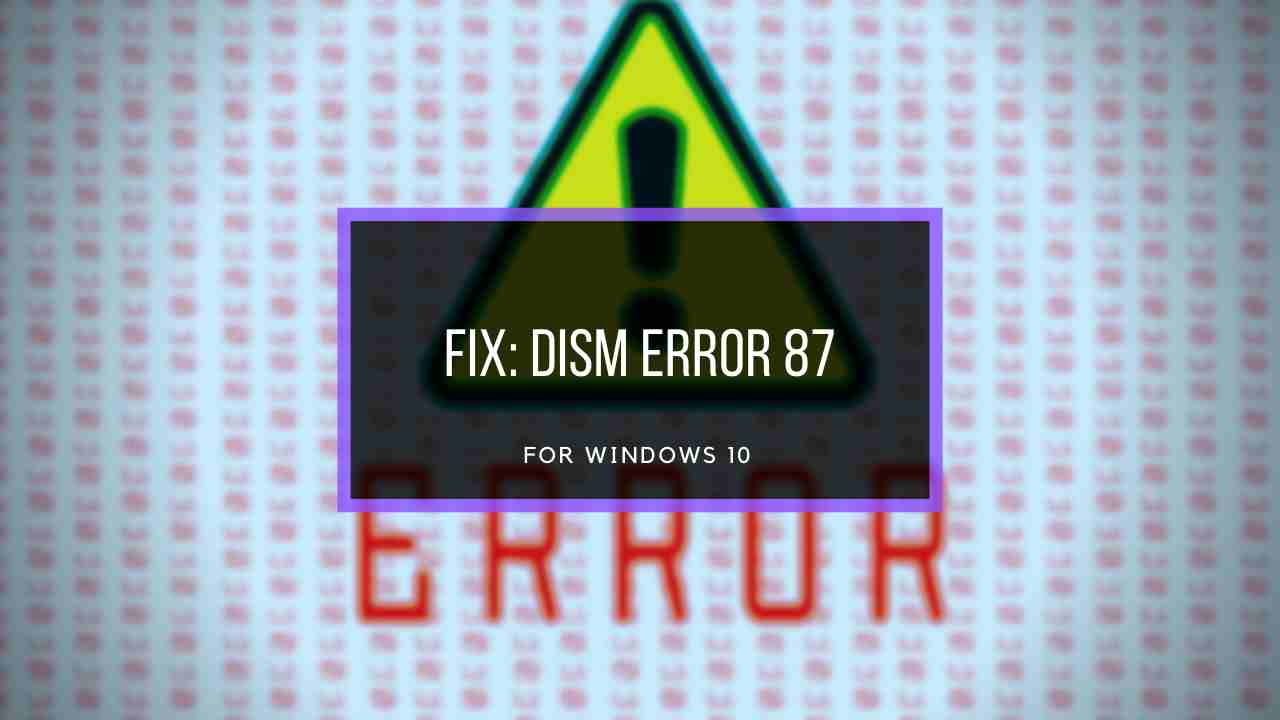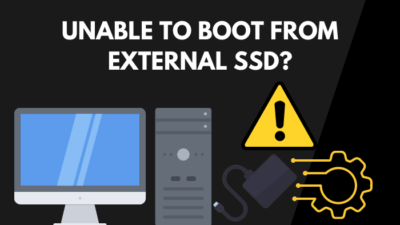One fine morning, you turn on your PC, and suddenly you see an error message prompting boot device not found. Everything was fully functioning that last night, but what happened abruptly?
What does the error message mean, and how to get rid of it? Relax!
Read through this article carefully as I explain all the possible causes and the best effective fixes for this scary-looking error.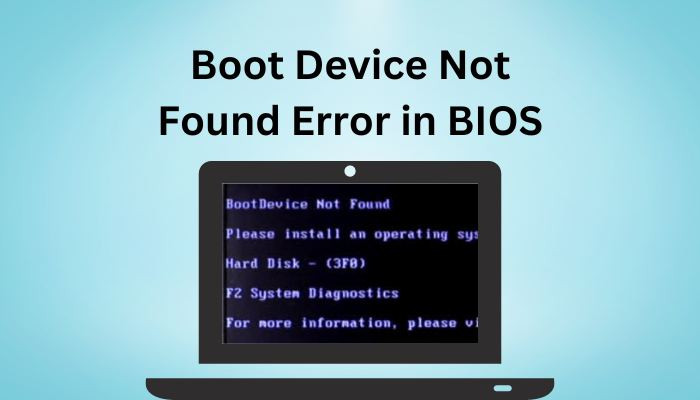
So, without further ado, let’s jump in!
Also, check out our separate post on what is SVM mode in BIOS.
What is the meaning of Boot Device Not Found Error Message?
Boot device not found error message means that your system can not recognize the hard disk with your installed operating system on it. Basically, when your PC fails to load the booting device containing the OS, the error is reported on the BIOS black screen.
Usually, when you press your laptop’s or desktop PC’s power button, the BIOS recognizes the boot device (HDD) and instructs the machine to load the operating system. Unable to detect the bootable drive, you will be stuck at the black screen of the startup command prompt shortly after pressing the power button.
As I am an HP laptop user, in my case, the error text that I saw was Boot device not found please install an operating system on your hard disk. 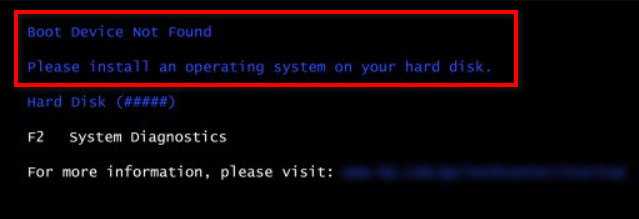
Here’s how other brand’s motherboards prompt the error:
- No boot device found – insert boot disk and press any key.
- Boot device not found – hard disk (3f0).
- No boot device is available.
All these messages mean the same thing — your machine can not locate the bootable device to initiate the operating system.
Follow our guide to fix keyboard not working in BIOS.
What Are The Causes of No Bootable Device Found Error?
There are a few reasons why your computer may experience a no bootable device found error.
The boot device not found error occurs when the hard disk does not support the system boot process. In case the bootable HDD is corrupted, or MBR/boot sector is damaged, you can experience the error. Furthermore, the error code may prompt up due to the wrong system boot priority. 
Once the error appears on your PC screen, the OS can no longer start up. Thus, you should diagnose the cause behind the hard disk error code 3f0 and solve the problems at once.
Here are the possible causes for no bootable device found error in BIOS:
- Wrong boot order in the BIOS.
- Hard disk connection problem.
- Outdated or misconfigured BIOS settings.
- Corrupt System files or boot files.
- Damaged Master Boot Record (MBR) or boot sector on the bootable HDD.
- Loose or faulty SATA/IDE cable connecting your hard drive to the motherboard.
- Viruses and malware attack on the bootup device.
Plenty of causes, right? Want to know how to mitigate these issues? Read the following section to find out.
Check out the easiest way to gateway BIOS updates.
How to Fix BIOS Boot Device Not Found Error
Boot device not found error can occur unexpectedly when you try initiating the OS (Windows 7/ 10/11) on your HP, Dell, Lenovo laptop or desktop PC. Fortunately, you can fix the 3F0 error with some pretty easy methods.
You can quickly solve the Boot Device Not Found Error in BIOS by correcting the boot order, executing a system hard reset and rebuilding corrupted MBR. Additionally, you can restore BIOS default settings to fix the boot device failure for good.
Before attempting any of the methods I mention down below, check the SATA/IDE cable and make sure they are tightly connected to the motherboard.
Also, disconnect the HDD and then reconnect it to the power supply and motherboard. These two basic tricks have many times solved the 3F0 boot device failure issue.
Here are the methods to resolve the boot device not found error in BIOS:
1. Change the Boot Order
If your hard drive is not prioritized as your boot device in the BIOS, the bootable device error may pop up. So, you must change the boot order and set the HDD where you installed the OS as the first device to boot.
Here’s how to change the boot order in BIOS:
- Restart the computer.
- Press the Boot Menu key (depending on different manufacturers, it can be F10, ESC, F1, F2, F8…) to enter the BIOS settings menu.
- Move to the Boot tab using the Right arrow key.
- Move Hard Drive to the top of the boot order list by pressing + or –.
- Press F10 to save the changes.
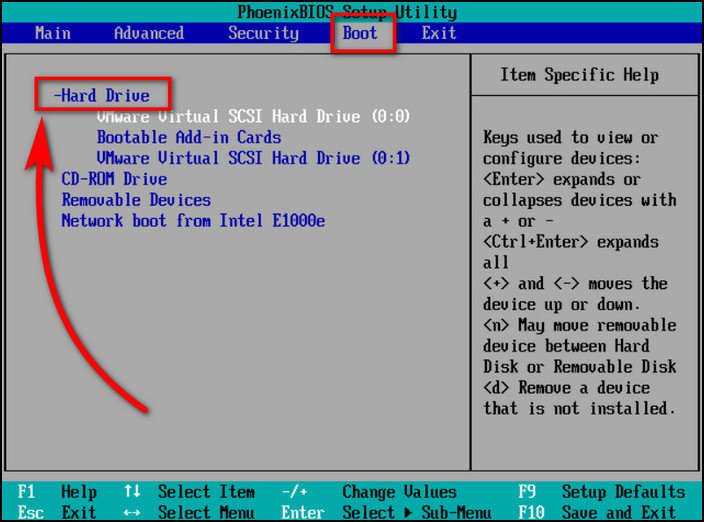
Once you are done setting the HDD as the top device on the Boot menu, restart the PC and check whether the error is solved.
Have some time to spare? Quickly check out our epic guide on how to fix CPU fan not detected in BIOS.
2. Perform System Hard Reset
When you reset your PC, the system configuration gets clear and re-establish the software connections between the BIOS and the hardware. Hence, any issues with the booting device are fixed.
Here are the steps to perform a system hard reset:
- Turn off your PC and remove it from any docking station.
- Unplug the AC adapter from the PC.
- Press the power button for 15 seconds to drain the remaining power.
- Insert the battery and plug the AC adapter back into the computer.
- Turn on the PC. The Startup menu will appear.
- Select Start Windows Normally, and press Enter.
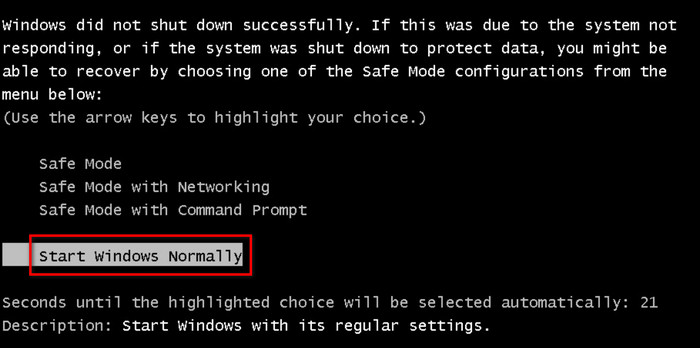
After that, your computer should load the OS and start up normally without showing any errors.
Also, check our exclusive tutorial on BIOS not detecting USB.
3. Fix Corrupted MBR
If your system drive’s MBR (Master Boot Record) gets corrupted, it can cause the No boot device available error to pop up. To solve this, you must rebuild the corrupted MBR.
Follow these steps to rebuild the master boot record (MBR):
- Insert the Windows installation media into your PC and activate it.
- Choose the language and region.
- Click on Repair your computer under the Install now windows.
- Select Troubleshoot.
- Open the Command Prompt on the Advanced options screen.
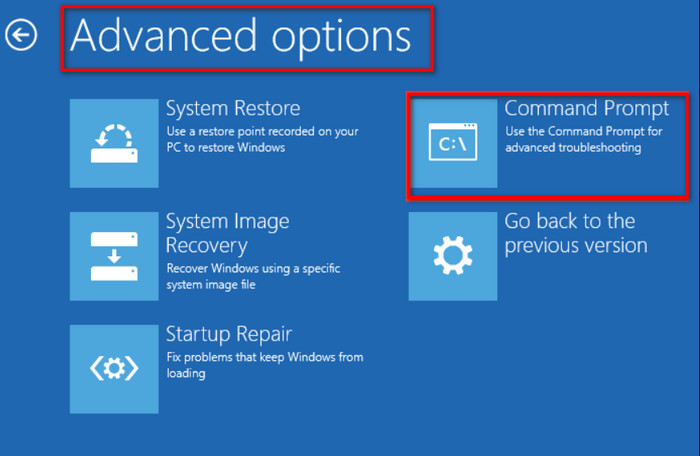
- Input the following command lines and press Enter after each line.
bootrec /fixmbr
bootrec /fixboot
bootrec /scanos
bootrec /rebuildbcd
(If you are asked for confirmation to add a new installation to the boot list, type Y and then press Enter.)
- Exit Command Prompt.
After completing the steps, restart your computer and check whether the error still persists.
4. Restore BIOS to Default Settings
If the above-mentioned methods fail to solve the issue, your only option is to restore the BIOS to this default setting.
Here’s how you can restore BIOS to default settings:
- Restart the computer.
- Press the Boot Menu key (depending on different manufacturers, it can be F10, ESC, F1, F2, F8…) to enter the BIOS settings menu.
- Press F9 to select and load the BIOS Setup Default settings on the BIOS Setup screen.
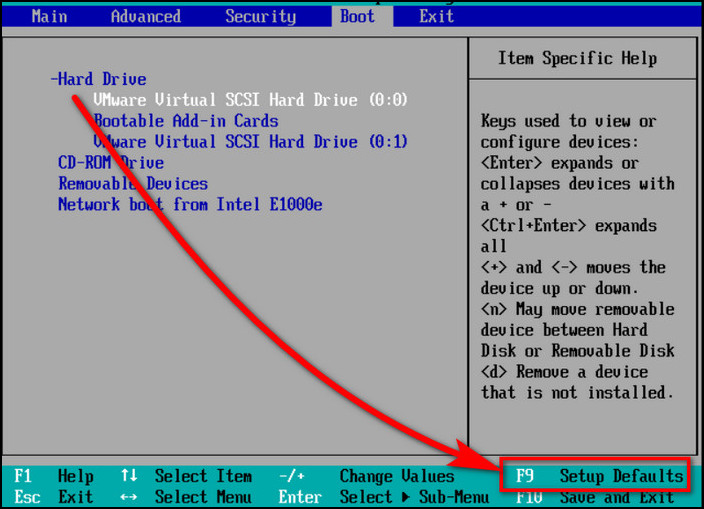
- Press F10 to Save and Exit.
- Select Yes using the arrow keys and press Enter.
Once done, follow the prompts to restart your computer. Your device booting issue should be gone by now.
However, if it still doesn’t fix the issue, then it’s confirmed that your HDD is badly damaged or even dead. In such unfortunate cases, you have no other option but to buy a brand-new HDD and replace the old boot device.
Final Words
Don’t get terrified if you ever encounter the no bootable device found error. Just keep calm and try out the efficient solutions I mentioned in this guide to fix hard disk error code 3F0.
Finally, I felt really happy to help you guys, and hopefully, you can now eliminate the device booting failure issue all by yourself.
Share your suggestions and comment down below which method worked for you.

